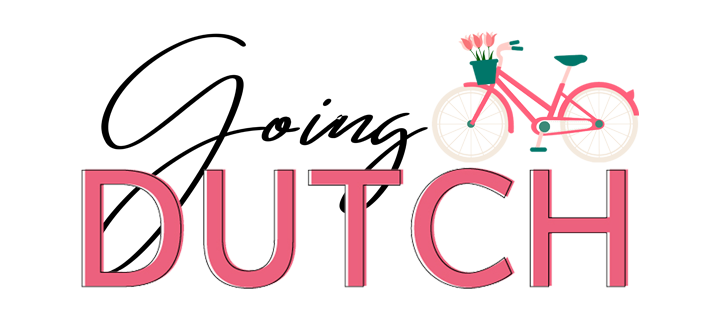So many people are quite surprised we chose to relocate to Europe, known for its grim winters. Our priority was never about finding somewhere with a similar South African climate, and we knew that we’d all have to try to embrace the cold and grey as best as possible. In Amsterdam, winter doesn’t fall below 1 or 2, and when we were here in January, it really wasn’t so bad. And yes, I realise that a week of winter isn’t exactly three months of it.
Autumn was pretty and mild, and while it’s currently around 1 or 2 this week – we are super warm inside (usually in T-shirts – our central heating is currently set to 23), we have cosy clothing already, and the lights in the city are just beautiful. It helps that I’m working from home, and don’t need to get out that much during the day. That said, I’m very aware of how a winter without much sunshine could affect my mood and happiness, and I’ve been advised to take vitamin D and get a special light therapy bulb, which I popped into my desk lamp.
Nikki Temkin, a Johannesburg-based functional health and wellness coach, wrote a fantastic piece below on Seasonal Affective Disorder (SAD), how she overcame it. and tips for avoiding it in winter.

When I moved to the UK to attend university as a 21 year old student, among the unfamiliar challenges I faced for example making friends, finding a house share, working out a budget, fitting into the (drinking) culture and suddenly going from my tight-knit group of Joburg friends to being totally anonymous, was the weather. Or more specifically, the fact that in winter, by 3pm, the sun was setting and by 4pm, it was completely dark.
Soon after arriving in gloomy Northern Sheffield snow in a frostbitten February, I noticed that although after a few weeks I’d become used to doing my grocery shopping in the dark, I felt quite… well… sad. At first, I put it down to being homesick and the fact that the only interaction I’d managed to have with another human being so far was the grocery store till guy.
Yet, some time went by and still the sadness seemed to shroud me like a cloak of melancholy– not my usual temperament. I couldn’t quite put my finger on it. Then, my mom (in those days she was my Google) pointed out that it might be due to SAD (Seasonal Affective Disorder), a type of chronic depression related to changes in seasons.
Symptoms may manifest as :
- Moodiness
- Irritability/ agitation
- Unexplained sadness
- Demotivation
- Lack of interest or joy
- Sleeping issues
- Changes in appetite or weight
- Low energy levels
- Fatigue/ sluggishness
- Lack of concentration/ focus or memory issues
- Feeling hopeless or despairing
Natural treatment options include:
* Light therapy may include artificial light therapy or getting out into direct sunlight for 20-30 mins per day in peak hours. This will also stimulate Vitamin D production.
* Psychotherapy – Talking to a therapist can be helpful
* Wellness coaching – a functional health coach can work with you on an empowering protocol to assist with the challenges of SAD syndrome.
* 5-HTP is an inexpensive nutrient supplement from an African bean that helps increase brain serotonin levels. The body can make 5-HTP to convert into serotonin, but it must have enough tryptophan on hand to do so, which typically comes from food. By supplementing with 5-HTP, the body can quickly yet naturally replenish serotonin levels. It’s a natural anti-depressant with much fewer side effects.
* Tyrosine, also a natural antidepressant, is the fuel our brain uses to make another natural antidepressant, catecholamines. It’s effective in reversing physical and mental consequences of stress and contributes to an overall sense of well-being by promoting powerful pleasure-inducing chemicals called “enkephalins” (cousins to endorphins).
* Melatonin is synthesised from the amino acid tryptophan by the pineal gland in the back of the brain. The perception of daylight in the eyes is a signal for the pineal gland to inhibit melatonin synthesis and release. At night or in the dark, the body’s melatonin production rises and brings on sleep. The change of seasons can disrupt the balance of melatonin levels. A melatonin supplement supports a balance of the sleep/wake cycle. It needs a doctor’s script and needs to be taken on and off so that your body does not stop producing its own melatonin. It’s also a potent immune booster being recommended for Covid-19 treatment and prevention. A dose of 3.5mg is a standard dose but it’s individual.
* SAM-e participates in a wide variety of biochemical reactions including to provide support for healthy functioning of neurological processes. It can help to optimise serotonin and dopamine as well as the brain’s sensitivity to them.
* St. John’s Wort, a flowering perennial is known for mood balancing and positive, supportive effects on mental and emotional function. Please be aware that one of the possible side effects is photosensitivity (light sensitivity) that should recede once you stop taking the supplement.
* Vitamin D will be low without the presence of sunlight. Supplementing will not only improve your immune system but also your mood. Try a liquid form which is most absorbable or a combination of Vitamin D and Vitamin K capsules.
I ended up taking St John’s Wort at the time, which helped tremendously. It’s more than a case of just the “winter blues”, and my advice is not to brush off SAD—rather be proactive in casting off that seasonal funk as there is a lot you can to do manage the condition.
Please consult your healthcare professional before taking any supplements. Natural remedies can be powerful and may be contraindicated for some conditions and medications. If these remedies are not helping, or you are having thoughts of self-harm, please seek further help for depression.
Nikki Temkin is a Functional Health and Wellness Coach who helps clients recover from burnout, stress, anxiety and other imbalances to achieve balance, joy and vitality. To learn more about Nikki, follow her on Instagram or Facebook.





